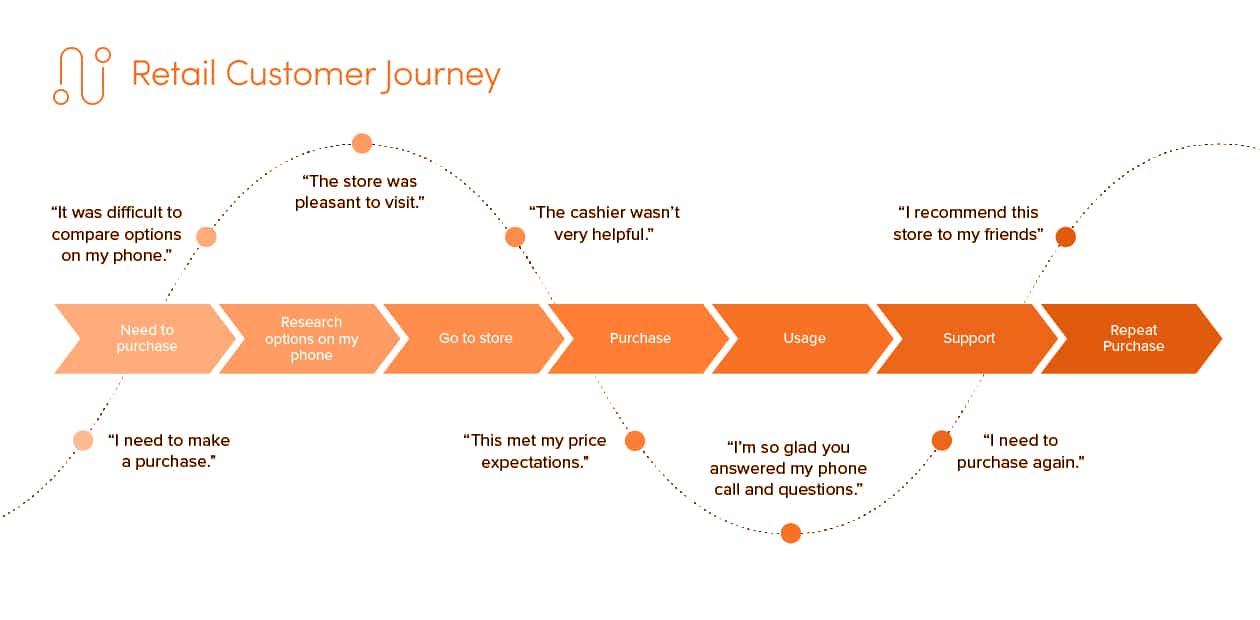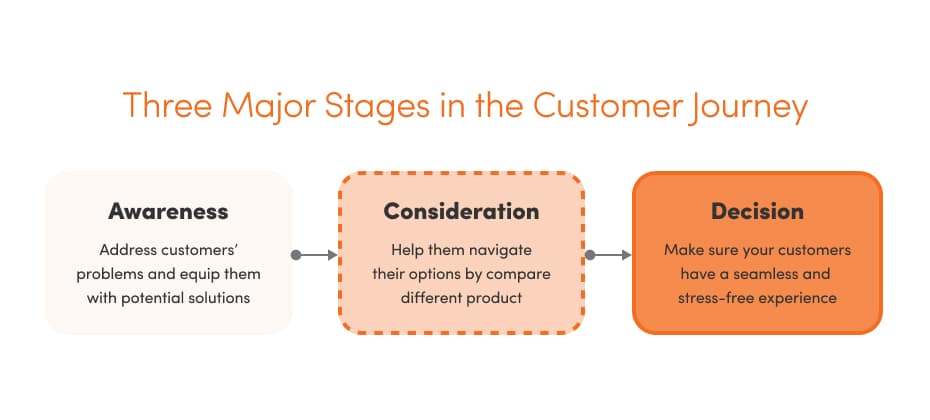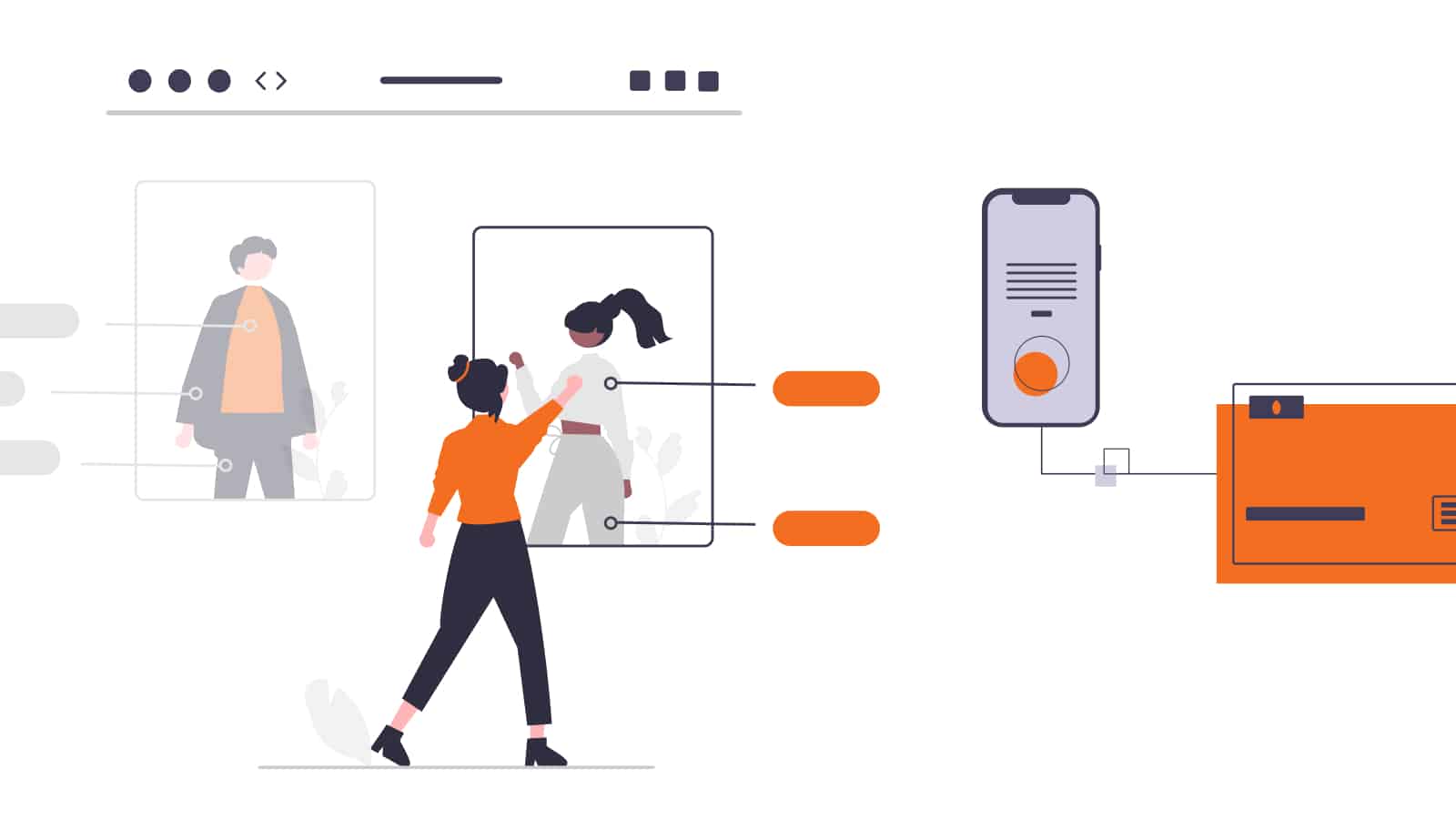The primary job of a branding agency is to help brands develop their most effective style, imagery, and messaging. And while anyone can jump on social trends to quickly increase brand awareness, a professional branding agency can expertly guide a brand to craft an intelligent marketing strategy that will capture consumer attention, engage them in the brand narrative and entice them to buy. So how can a brand develop messaging and design campaigns that connect with consumers?
Consumers don’t wake up and decide to buy on a whim. They research and evaluate. They consider their needs, lifestyle, and budget. Each step of this decision-making process is known as the customer journey, and understanding this journey is vital to understanding and enhancing a customer’s path to purchase. As marketers, it’s our job to understand our customer’s journey and guide them through the decision-making process, and we do this through the development of a customer journey map.

What is customer journey mapping?
Customer journey mapping, also known as user experience or UX journey mapping, requires marketers to put themselves in their customer’s shoes to create a visual story line of every engagement the customer will have with their brand. Whether this journey is in-person, online or a mix of both, customer journey maps can be used to track a customer’s journey toward multiple goals, including product purchase or using specific product features. These valuable insights allow brands to empathize with customers through each step of their decision-making process, understand their experience as consumers, address any issues that customers may encounter when contemplating purchase, and adjust or innovate the brand’s marketing and business strategies.
Some marketers take a customer-centric approach to their work by predicting each step that a customer will make. Each step brings its own roadblocks, opportunities, and concerns, but by anticipating and predicting these moments, a business’s internal marketing and sales teams or external branding agency can prepare and modify their processes to help the customer along their journey. They spot moments that drive customers toward a goal, as well as the obstacles that get in their way. A customer journey map is a marketer’s attempt at predicting this process to prepare and adapt for customer needs. By correctly implementing customer journey mapping, a brand can turn strangers into loyal customers.
How can I create a customer journey map for my brand?
While there are tools available to help, like downloadable templates or partnering with a branding agency, creating a customer journey map is still a complex process. Attempting to consider every factor and obstacle a customer may encounter, from the moment they become problem-aware to the moment they decide to buy, is extremely difficult and can never be 100% accurate for every customer. However, a detailed and thoughtful customer journey map will ensure that you are aware of and prepared for as much as possible. Let’s walk through the process of creating a basic customer journey map:
1. Identify your buyers’ persona and their goals.
Every successful branding decision begins with research, so now is the time to define exactly who your target consumers are and why they might need your products. Using any data you can gather from behavior analytics tools or content management systems (CMS), try to determine your customers’ intentions, motivations, expectations, and pain points. Collect additional data through customer feedback questionnaires or user testing. These insights will help you chart your customers’ multiple points of contact and enable you to see the step-by-step journey they would typically take when interacting with your brand.
2. Create a framework for the three major stages in the customer journey:
 Awareness stage: The awareness stage consists of a customer’s realization that they have a problem or need, and while they might not know if a product or service could solve this problem, they will begin researching practical solutions. Keep in mind that the act of researching will lead the customer to encounter a wide variety of information, including competitor ads, online reviews, or influencer recommendations. Your job during the awareness stage is not to sell your product, but rather to offer insightful or educational content that addresses customers’ problems and equips them with potential solutions.
Awareness stage: The awareness stage consists of a customer’s realization that they have a problem or need, and while they might not know if a product or service could solve this problem, they will begin researching practical solutions. Keep in mind that the act of researching will lead the customer to encounter a wide variety of information, including competitor ads, online reviews, or influencer recommendations. Your job during the awareness stage is not to sell your product, but rather to offer insightful or educational content that addresses customers’ problems and equips them with potential solutions.
Consideration stage: In the consideration stage, customers have determined through their research that they need the help of a product to solve their problem, but they haven’t yet decided on the type of product they need or a brand they trust. During the consideration stage, consumers compare multiple brands and products to see which solutions would best solve their problems and fit into their lives and budgets. Your brand’s job during the consideration stage is to use every consumer touchpoint, including chat support conversations, sales rep interactions, product demonstration videos and website content, to offer the customer useful product marketing content that will help them navigate their options, compare different products and ultimately move them toward a decision.
Decision stage: Customers in the decision stage have completed their research, considered multiple products and are now ready to make a purchase. As long as the checkout process is smooth and simple, customers should move forward with their decision to buy at this point. Your job in the decision stage is to make sure your customers have a seamless and stress-free experience making their purchases.
3. Once you have established this framework, walk through each of the above stages and ask these questions:
- What is the customer thinking or feeling right now?
- What are the customer’s actions at this point in their journey?
- What emotions is the customer feeling at this stage? Are they worried, excited, relieved, or something else?
- What products is the buyer researching, and where are they finding this information?
- How can we support and move the buyer along in their journey?
- What brand goals are we trying to achieve at this stage?
As a sidenote, if you want to go above and beyond in creating your customer journey map, you might choose to add a fourth stage: the delight stage. During the delight stage, you can determine how to exceed customer expectations to solidify a positive experience and guarantee a loyal customer. This might look like providing exceptional customer service, extremely organized and helpful website content, or exciting social media posts.
And with that, you have the beginning of a customer journey map.
Customer journey mapping with (matter)
Customer journey mapping offers an incredible opportunity for your brand to understand the goals, motivations and emotions of your potential customers and then problem-solve in ways that will make their experience even more enjoyable.
If you need help from a tried-and-true branding agency to build a strong, insightful customer journey map for your brand, (matter) is here to help. With the expertise of a branding agency, you can uncover insights, optimize touch points, drive conversions, and navigate the customer journey with precision. (matter) blends strategy with creativity to help brands develop a customer journey map that works for them. Visit our website to learn more or contact us for a consultation.
